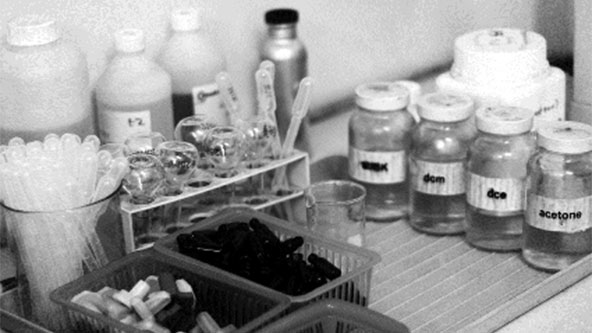What Is Acetone?
Acetone, also known as propanone, is a clear, colorless liquid that is highly flammable. It is not necessarily a household word, but this will ring a bell: nail polish remover. Acetone is also used as a degreaser, for thinning fiber glass resin, and helps remove adhesives and vinyl resins. While it is a widely used product, and is even made in our bodies, acetone is considered a hazardous waste material and needs to be handled and disposed of properly. The potential negative health effects are skin, eye and lung irritation. Long-term exposure can result in dry, cracked skin and possible damage to the nervous system. Here is a sample MSDS for acetone in the GHS format (not for official use). For more SDS information about acetone and other chemicals, visit MSDSonline.com and try our SDS/MSDS search tool.
What Is Acetone Used For?
The majority of the world's acetone is used as a solvent, but it also has laboratory, medical, cosmetic and other uses. Acetone’s most well-known use is in nail salons, but it appears in many other industries:
- Printing – as a cleaning solvent
- Adhesives Manufacturing – most commonly in carpet adhesives
- Wood Stains and Varnishes – for varnish solvents – very common in households
- Paint Stripping – as a solvent, also common in households
- Polystyrene Manufacture – for polystyrene production
- Machinery Manufacture and Repair – as a cleaning solvent
- SBR Latex Production – as a solvent
- Electroplating – as a vapor degreaser and cold-cleaning solvent
Acetone Safety Tips
Below are some tips on how to stay safe when using acetone. Visit MSDSonline.com and try our SDS/MSDS search tool.
- Make sure the area in which the acetone is used is well-ventilated
- Wear proper PPEs (gloves, goggles, mask)
- If you work with acetone on a surface, make sure the surface it’s a surface that doesn’t soak up the liquid
- If you use acetone in your business, make sure you have got the proper licensing in place to do so
Acetone is a common item, but it can pose some serious risks, particularly in regard to its high flammability. By taking these simple steps, you can ensure a safe environment any time you use acetone.
Acetone Storage
If you need to store your acetone, do so with a tight-fitting lid and store in a space where there are no electrical outlets, stoves, or heat-producing sources. As stated above, acetone is highly flammable and can be ignited from a distance.
If your business uses a large quantity of acetone, you’ll need to consult with your local fire department to ascertain how to store your acetone in a manner that accommodates large amounts of the liquid and also to determine if the acetone needs to be in a fireproof container.
How to Dispose of Acetone
Acetone disposal needs to be handled according to how much is being used. If you are using acetone for a small item, like removing nail polish, you can dispose them in a metal container lined with a plastic garbage bag; this bag can then be placed with regular garbage. However, if you have a fully saturated cotton ball or rag, you need to squeeze the excess acetone liquid into a container that will seal tightly, double-bag the material and then place into a regular garbage bag.
To dispose of liquid acetone, you need to take the acetone to a hazardous waste treatment, storage, disposal or recycling facility (TSDR) drop off site or contract with a TSDR to pick it up from your business. To find a hazardous waste disposal facility in your regional area, visit the Environmental Protection Agency website at www.epa.gov.
For more information on acetone and other hazardous chemicals, visit the MSDS website at www.msdsonline.com or call 1-888-362-2007.
Need to track down the SDS document? Visit MSDSonline.com and try our SDS/MSDS search tool. The MSDSonline database from VelocityEHS contains millions of manufacturer-original safety data sheets. Start a free trial today.







